Sallen-Key Active Butterworth Low Pass Filter Calculator
RC 2nd Order Passive Low Pass Filter

The cut-off frequency of second order low pass filter is given as

Second order low pass filter -3dB frequency is given as

where ƒc is the calculated cut-off frequency, n is the filter order
and ƒ-3dB is the new -3dB pass band frequency as a result in the increase of the filters order.

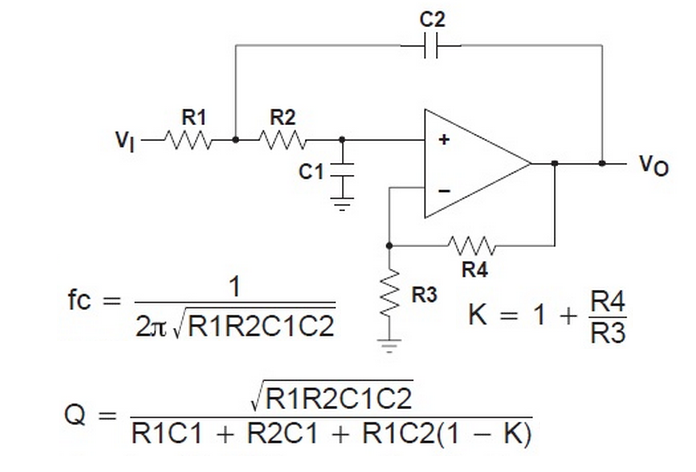
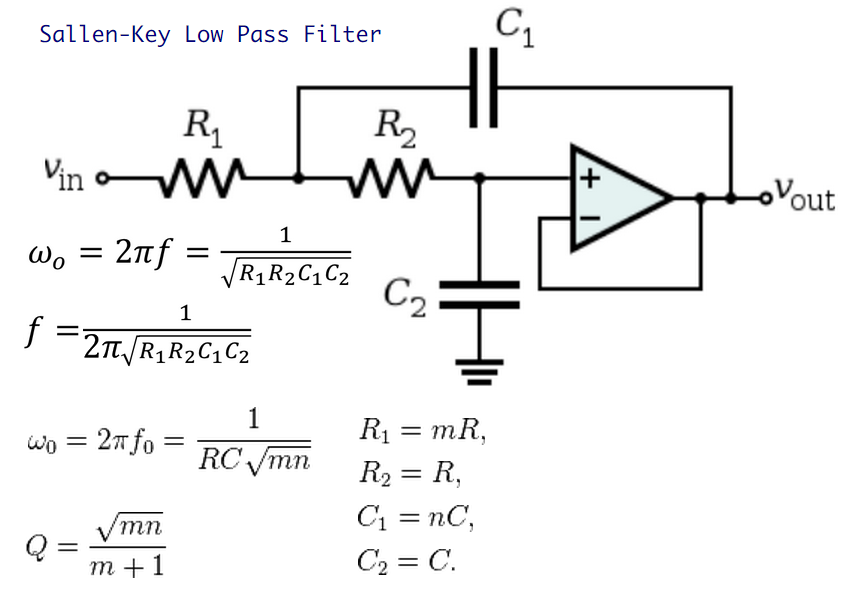
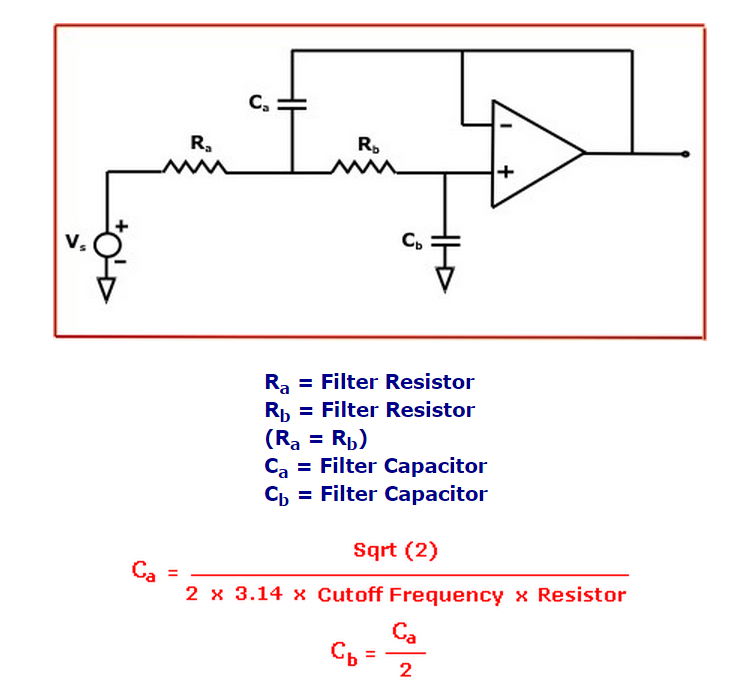
Cutoff Frequency : 50 KHz
Ra : 225 ohm
Rb : 225 ohm
Ca : 20 nF
Cb : 10 nF

Suppose you had a large interfering signal you needed to get rid of.
To get lots of attenuation, you could cascade several RC filters.
Unfortunately, the impedance of one RC section affects the next.
This means that the “knee” or transition between the pass and stop bands won’t be very sharp.
A sharp knee helps you reduce the interfering signal without degrading your desired signals.
In this situation, the Sallen-Key active filter can save the day.
This circuit implements a 2-pole filter.
Cascading several stages can give you a steep attenuation curve with a very sharp knee.
LOW-PASS FILTER DESIGN
Although there are many filter types and ways to implement them, here’s an active low-pass filter
that’s greatly simplified if R1=R2 and the op amp stage is a unity gain follower (RB=short and RA=open).
Designing a 2-pole Butterworth filter requires just a few steps.
1. Choose a cutoff frequency fo (Hz).
As an example, select fo=10 kHz to reduce a noise signal at 50 kHz and pass your desired signals below 5 kHz.
2. Pick a convenient cap value C2 between 100pF and 0.1 uF.
Suppose you’ve got plenty of 1000pF caps in stock, select this value for C2.
3. Make C1 = 2 x C2
C1 = 2 · C2 = 2000pF
4. Calculate R1 = R2 = 0.707 / (2 · π · fo · C2)
R1 = R2 = 0.707 / (2 · π · 10kHz · 1000pF) = 11.2 K ohms
Sallen-Key Low Pass Filter Design Equations
We've created a low pass Butterworth Sallen-Key filter calculator,
which automatically computes the resistor and capacitor values for a filter with a given number of poles.
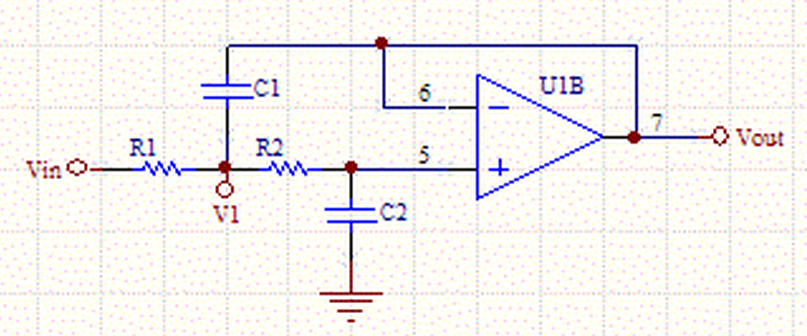
We want to derive a transfer function for the Sallen-Key op-amp circuit in the following form:
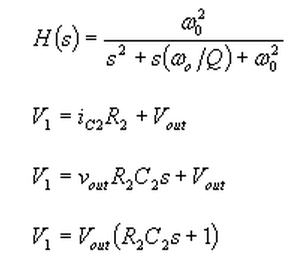
The sum of the currents at node V1.

Substituting for V1
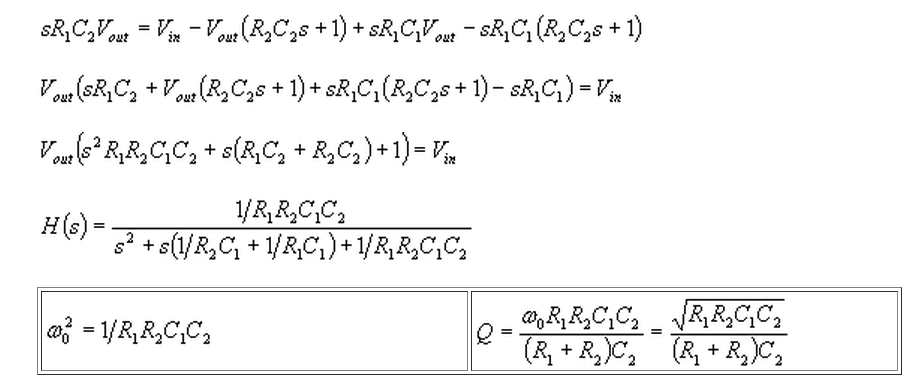
We have more free parameters than we really need so we can set R1=R2=R.
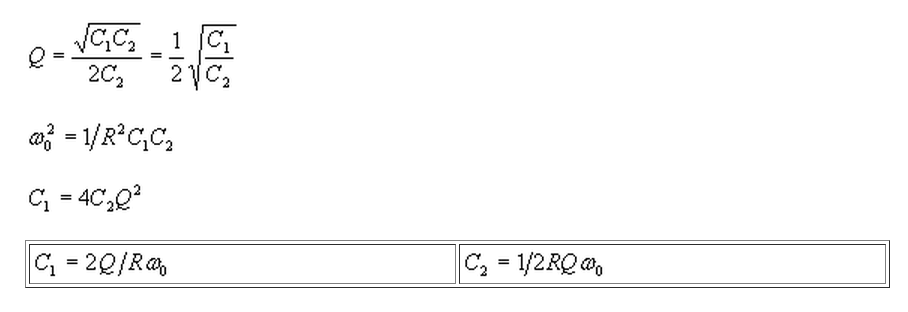




【推荐】国内首个AI IDE,深度理解中文开发场景,立即下载体验Trae
【推荐】编程新体验,更懂你的AI,立即体验豆包MarsCode编程助手
【推荐】抖音旗下AI助手豆包,你的智能百科全书,全免费不限次数
【推荐】轻量又高性能的 SSH 工具 IShell:AI 加持,快人一步
· Linux系列:如何用heaptrack跟踪.NET程序的非托管内存泄露
· 开发者必知的日志记录最佳实践
· SQL Server 2025 AI相关能力初探
· Linux系列:如何用 C#调用 C方法造成内存泄露
· AI与.NET技术实操系列(二):开始使用ML.NET
· 被坑几百块钱后,我竟然真的恢复了删除的微信聊天记录!
· 【自荐】一款简洁、开源的在线白板工具 Drawnix
· 没有Manus邀请码?试试免邀请码的MGX或者开源的OpenManus吧
· 园子的第一款AI主题卫衣上架——"HELLO! HOW CAN I ASSIST YOU TODAY
· 无需6万激活码!GitHub神秘组织3小时极速复刻Manus,手把手教你使用OpenManus搭建本
2014-09-14 How to Use a Function or a Procedure as a Parameter in another Function